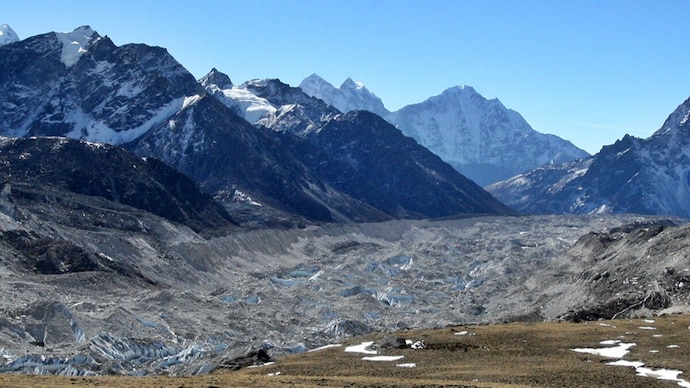
Evidence found in Himalayas reveals half of Earth's glaciers will disappear if...
The research, published in the journal Science, is based on extensive fieldwork conducted between 2013 to 2017 at the Imja-Lhotse Shar Glacier in the Himalayas.

In Short
- World's glaciers could lose as much as 40% of their mass
- The study used sophisticated modeling techniques
- The research is published in the journal Science
In a groundbreaking study led by Dr. David Rounce, assistant professor at Carnegie Mellon University, it has been estimated that the world's glaciers could lose as much as 40% of their mass by 2100 due to global warming.
The research, published in the journal Science, is based on extensive fieldwork conducted by Rounce and his team from 2013 to 2017 at the Imja-Lhotse Shar Glacier in the Himalayas.
Rounce's firsthand experience of the rapid recession of the glacier and the expansion of the lake at its base was a stark revelation of the effects of climate change. "To go to the same place and to see the lake expand and see how the glacier was thinning rapidly was quite eye-opening to say the least," Rounce said.
The study used sophisticated modeling techniques to predict the impact of global temperature increases of 1.5 to 4 degrees Celsius above pre-industrial levels on the world's glaciers, excluding the Greenland and Antarctic ice sheets. The findings suggest that with a 1.5 degrees Celsius increase in temperature, half of the world's glaciers would disappear, contributing to a sea level rise of 9 centimeters by 2100.
If global temperatures reach an increase of 2.7 degrees Celsius, nearly all glaciers in Central Europe, western Canada, and the U.S., including Alaska, will have melted. An alarming 80% of the world's glaciers would vanish if warming reaches 4 degrees Celsius, leading to a sea level rise of 15 centimeters.
"Regardless of temperature increase, the glaciers are going to experience a lot of loss," Rounce warned. "That’s inevitable."
The study is the first of its kind to use satellite-derived mass change data describing all the world's 215,000 glaciers. The model accounted for glacial debris cover, which can influence glacial melting. A thin layer of debris can enhance melting, while a thick layer can insulate and reduce it.
Glaciers in remote regions, far from human activities, are particularly potent indicators of climate change. Their rapid melting impacts freshwater availability, landscapes, tourism, ecosystems, the frequency and severity of hazards, and sea level rise.
"Sea level rise is not just a problem for a few specific locations," said Ben Hamlington, leader of NASA's Sea Level Change Team. "It’s increasing almost everywhere on Earth."
Despite the grim projections, Rounce remains hopeful. "We are not trying to frame this as a negative look at the loss of these glaciers, but instead how we have the ability to make a difference," he said. "I think it’s a very important message: a message of hope."
